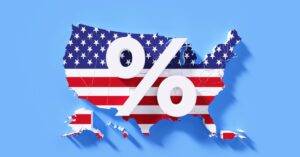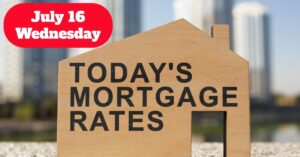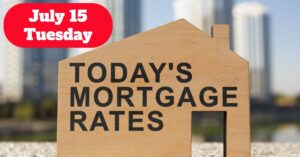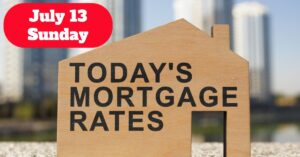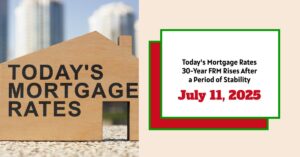Are you in the market for a new home or looking to refinance? I know the first thing on everyone's mind is, “What are the mortgage rates looking like?” The states with the cheapest 30-year new purchase mortgage rates are New York, New Jersey, California, Florida, Georgia, and Pennsylvania. These states show average rates between 6.79% and 6.89%. This information can hopefully help you make the best, most informed decision.
Mortgage Rates Today: The States Offering Lowest Rates – July 16, 2025
Why Do Mortgage Rates Vary by State?
It's a question I get asked all the time: why don't we all just pay the same rate? Well, the thing about mortgage rates is that they're not one-size-fits-all. Several factors influence them on a state-by-state basis:
- Different Lenders: Not every lender operates in every state. This means less competition in some areas, potentially leading to higher rates.
- Credit Scores: Average credit scores can vary quite a bit from state to state. Areas with lower average scores tend to see slightly higher rates to offset the increased risk for the lender.
- Average Loan Size: The average amount people borrow also fluctuates. Larger loans can sometimes come with slightly different rate structures.
- State Regulations: Each state has its own set of rules and regulations when it comes to mortgages. These can influence the costs for lenders and, ultimately, the rates they offer.
- Lender Risk Management: Each lender evaluates risk differently. Some might be willing to accept a slightly lower rate for what they deem a safer market, while others may demand a premium.
Where Are Rates the Highest?
On the flip side of the coin, some states are seeing higher rates than others. According to Investopedia's report and Zillow's data, those states include:
- Alaska
- West Virginia
- New Mexico
- Washington, D.C.
- Kansas
- Nebraska
- Vermont
- Iowa
- South Dakota
- Wyoming
These states are currently seeing averages between 6.96% and 7.03%.
National Mortgage Rate Overview
Let's zoom out and take a look at the national mortgage rate picture. It's been a bit of a rollercoaster lately, to say the least.
- 30-Year Fixed: Currently averaging 6.91%, after a recent rise.
- FHA 30-Year Fixed: Averages around 7.55%. FHA loans are often a good option for first-time homebuyers or those with lower credit scores, though they typically carry slightly higher rates.
- 15-Year Fixed: Standing at 5.95%, a faster pay-off, lower overall interest option.
- Jumbo 30-Year Fixed: Rates averaging 6.84%. For those bigger ticket homes, Jumbo loans tend to have varying qualifications.
- 5/6 ARM: Sitting at 7.44%. An adjustable-rate mortgage can be a strategic choice if planned wisely.
Why the Fluctuations?
It's no secret that mortgage rates can be unpredictable. So, what exactly causes them to bounce around?
- Bond Market: Mortgage rates tend to track the 10-year Treasury yield. When yields rise, mortgage rates usually follow suit, and vice versa.
- The Federal Reserve (The Fed): The Fed plays a huge role through its monetary policy. Actions like buying bonds or adjusting the federal funds rate can significantly impact mortgage rates.
- Competition: The competitive landscape among mortgage lenders matters. If lenders are vying for business, they may offer lower rates to attract borrowers.
The Fed's Current Game Plan
The Fed's actions are something I keep a close eye on because they have such a direct impact on mortgage rates.
- Recent Moves: After a series of rate cuts in late 2024, the federal funds rate is currently in a target range of 4.25%-4.5%.
- Future Plans: The Fed is signaling potential rate cuts later in 2025, but the timing and magnitude are still being debated.
- Key Factors: The Fed is closely watching inflation, particularly the impact of tariffs, as well as economic growth and the labor market.
- Political Context: There's also political pressure, with President Trump frequently calling for rate cuts. However, the Fed insists it will remain data-dependent.
What It All Means for You
So, with all of this swirling around, what can you expect?
- Analysts predict that mortgage rates could decline to around 5% by 2028 if the the Fed follows through on rate cuts.
- The bond markets give a 5% chance of a rate cut on the July 30, 2025 meeting and is predicted to follow through on October.
Read More:
States With the Lowest Mortgage Rates on July 15, 2025
Are Mortgage Rates Expected to Go Down Soon: A Realistic Outlook
Shopping Around is Key
Whether you're in a state with the lowest rates or not, it's crucial to shop around and get quotes from multiple lenders. If you're in an area with higher rates, you might even consider working with a mortgage broker who can access a wider range of lenders to find the best deal.
Remember to compare not just the interest rate but also the fees and closing costs associated with the loan. Even a slightly lower rate can be offset by higher fees, and vice versa.
Don't Just Look at Rates: Consider the Big Picture
While finding the lowest possible rate is important, it's also worth considering the overall market and your personal financial situation. The cheapest rate isn't always the best option in the long run.
- Fixed-Rate vs. Adjustable-Rate Mortgages: With rates still relatively high, some borrowers are considering ARMs. An ARM can offer a lower initial rate, but it could increase over time as interest rates rise.
- Paying Points: You may have the option to “buy down” your interest rate by paying points upfront. This can be a good strategy if you plan to stay in the home for a long time, as you'll eventually recoup the cost of the points through lower monthly payments.
- Your Credit Score: Your credit score is a significant determinant of the rate you'll qualify for. Take steps to improve your credit score before applying for a mortgage to secure the best possible rate.
Final Thoughts
Navigating the mortgage rate world can be challenging. There's a lot of information to sift through, and the landscape is constantly changing. But by staying informed, understanding the factors that influence rates, and shopping around for the best deal, you can make a smart financial decision and achieve your homeownership goals.
So whether you are in New York, New Jersey, or Alaska, remember the market is dynamic and is constantly changing. So do your research and consult with a professional.
Invest in Real Estate in the Top U.S. Markets
Investing in turnkey real estate can help you secure consistent returns with fluctuating mortgage rates.
Expand your portfolio confidently, even in a shifting interest rate environment.
Speak with our expert investment counselors (No Obligation):
(800) 611-3060
Also Read:
- Will Mortgage Rates Go Down in 2025: Morgan Stanley's Forecast
- Expect High Mortgage Rates Until 2026: Fannie Mae's 2-Year Forecast
- Mortgage Rate Predictions 2025 from 4 Leading Housing Experts
- Mortgage Rates Forecast for the Next 3 Years: 2025 to 2027
- 30-Year Mortgage Rate Forecast for the Next 5 Years
- 15-Year Mortgage Rate Forecast for the Next 5 Years
- Why Are Mortgage Rates Going Up in 2025: Will Rates Drop?
- Why Are Mortgage Rates So High and Predictions for 2025
- Will Mortgage Rates Ever Be 3% Again in the Future?
- Mortgage Rates Predictions for Next 2 Years
- Mortgage Rate Predictions for Next 5 Years
- Mortgage Rate Predictions: Why 2% and 3% Rates are Out of Reach
- How Lower Mortgage Rates Can Save You Thousands?
- How to Get a Low Mortgage Interest Rate?
- Will Mortgage Rates Ever Be 4% Again?
